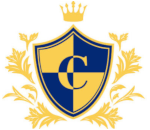In addition to Spanish higher education establishments, there are a number of U.S. universities with faculties in Madrid, including Schiller International University , St Louis University and Suffolk University . All classes at American universities are taught in English. The European University has a branch in Barcelona.
Although few Spanish universities are world-renowned, Spain has a long history of university education, the university system dating back to the middle ages. Spain’s oldest university, Universidad de Salamanca, was founded in 1218 and even before this, the Moors had ‘universities’ in Spain long before anyone else had even thought of them. The largest and most highly regarded Spanish universities are Complutense in Madrid and Central in Barcelona.
There are some 1.5 million university students in Spain, a figure generally considered to be too high for a country with a population of 47 million. Overcrowding is a huge problem, particularly in first-year classes (you must usually arrive early to get a seat at a lecture). However, many students drop out after the tough exams set at the end of the first year. The number of female students has increased by around 40 per cent in the last decade and they now outnumber male students (more women also complete their courses and obtain degrees than men). Foreign students comprise just 3 per cent of students, a third coming from EU countries. However, there has been an increase in the influx of students coming from Asian countries in the past few years.
Degrees offered
Since 2006, Spain has implemented structural changes in its university system in accord with the Bologna Process, which ensures comparability in standards with the European Higher Education Area (EHEA). Now, universities in Spain can either issue official degrees or non-official degrees.
Official degrees are adapted to the EHEA and therefore have validity in any country within the EHEA. Official degrees also have wider global recognition in countries outside of Europe, especially in Latin America and Asia. Official degrees are divided into three stages:
- Bachelors degrees (Grado) - these are equivalent to undergraduate degrees and require a total of 240 credits (usually three to four academic years). Grados are taught in the following fields: Arts and Humanities, Sciences, Health Sciences, Social Sciences and Law, Engineering and Architecture.
- Masters degrees (Posgrado) - these require 60 to 120 credits (usually one or two academic years). The completion and public defense of a thesis is also required.
- Doctoral degree or PhD (Doctorado) - these are divided into two cycles, one which requires 60 credits and another of research (normally three to four years). Doctoral students must complete a doctoral thesis and defend it publicly. The earning of a Doctorado requires the previous attainment of a Master degree.
Meanwhile, non-official degrees are not valid in the EHEA and are created by the university. These degrees are not usually recognised in other countries, however many are highly practical and geared to specialised sectors and therefore can have a high labour market value. The denominations of the non-official university degrees are Non-official Bachelor’s, Non-official Masters (Maestrias), Masters Specialist and Masters Expert.
Teaching and evaluation methods
Methods of teaching within Spanish universities consist of lectures, seminars, and practical work with guidance from a tutor. Lectures last about an hour and professors tend to use audiovisuals as teaching aids. Although not always mandatory, attendance is strongly recommended since it constitutes a fundamental aspect of higher education.
Students must take their final examinations in February or June depending on how long the courses last (they can be single semester courses or courses that run throughout the whole academic year). If students do not pass their exams in February or June, they have the option to re-sit them in September. Other forms of assessment include projects, presentations, and coursework. How these are distributed throughout the course can vary depending on the teacher and institution you attend.


